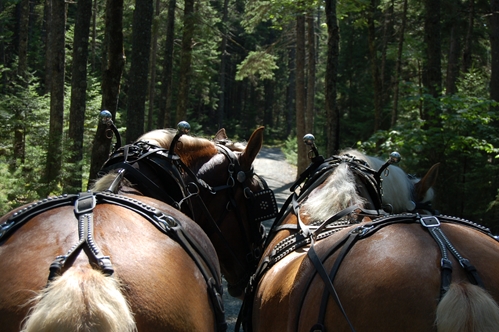Horses are strong, not invincible, and they need well-developed muscles to support the weight of a human. Unfortunately, it’s all too easy for a horse to strain its back. Equines in pain will never perform their best, regardless of whether the cause is an ill-fitting saddle or an underlying spinal issue.
As Equus Magazine pointed out, back pain in horses is harder to diagnose than lameness. A horse with hoof or leg issues has a compromised gait – for example, an equine with a stone bruise on one sole will limp or walk tenderly on that foot. Because the horse’s back is so complex – it consists of 23 to 24 vertebrae, several muscles, joints, ligaments, and a spinal cord – symptoms are hard to notice. Horse owners have to pick up on other clues.
“The most common symptom of back problems is behavior problems,” Joyce Harman, a veterinarian at Harmany Equine Clinic in Virginia, told Equus Magazine.
Unfortunately, it’s easy to mistake such behavioral issues as a failure in training or a poor attitude. Owners have to be perceptive and consider all possibilities for why a horse is acting out. Signs of a sore back include fidgeting, bucking, rearing, avoiding contact, biting, or pinning of the ears when saddled.
“Muscle strain is the most common cause of back pain.”
Causes and support
TheHorse.com listed several potential causes of back pain. Muscle strain is the most common and often occurs when a horse falls or doesn’t perform properly. Poor muscle strength, including a weak core, can also lead to a back injury. Like humans, horses use their cores to support their back muscles.
Equines can strain the supraspinous ligament just as easily as they strain a back muscle. This ligament runs down the middle of the back, and even a light touch on a strained one will cause a horse pain. Other potential causes include fractured vertebrae, osteoarthritis, and even a poorly fitting saddle.








